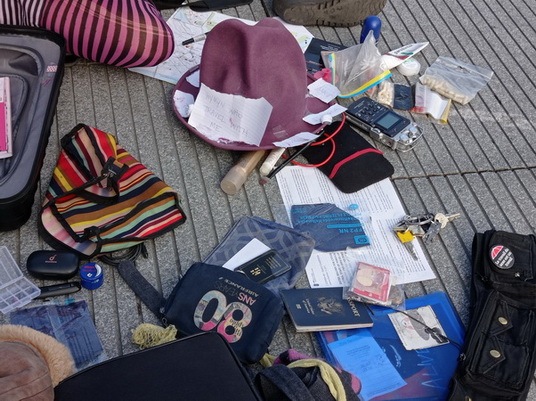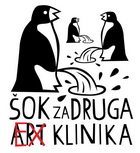Tanja Ostojic: The transformative power of feminist emancipatory art

Tanja Ostojic, an artist known for her feminist emancipatory artistic practice, talks in an interview with the SEEcult.org about the perennial art project “Mis(s)placed Women?”, the importance of art collaboration, and the significance of public speaking about sexual and other violence against women, and further, about the transformative potential of art in the role of changing the balance of power. Tanja Ostojic also reflects on the consequences of the pandemic on the work of artists, as well as on the cultural policy measures in Berlin, where she lives and works, and in Serbia, where she is often present through various exhibition and professional activities.

Mis(s)placed Women?, Belgrade, performance, photo: SEEcult
Dedicated to topics such as migrations, gender democracy, feminism, gentrification, power relations and vulnerability, especially in the context of women's and transgender bodies, Tanja Ostojic believes that issues of freedom of movement and vulnerability of certain social groups are further perplexed by the pandemics and various new restrictions that it demands.
“For example, domestic violence is on the rise, especially in a situation where both partners work from home. I noticed a considerable increase in the number of homeless women of all generations sitting on the street (or walking around), waiting to have dinner and spend the night in women's centers”, Tanja Ostojic said, citing that the women in Berlin who are homeless and have not yet been able to get vaccinated have no right to enter anywhere during the day to keep warm, as an example of the perplexity of the current situation.
At the recent exhibition at the Basement gallery of the Cultural Center of Belgrade, she presented two works by the participants of the “Mis(s)placed Women?” project, with whom she has already collaborated on several occasions in the past, and which she called upon in 2020, to look back at the specific situation in which they found themselves during the pandemic. One of them is Tanya Ury, an artist of Jewish origin who lives in Cologne and who, due to her old age and illness, could rarely leave her apartment, and whose movement has become even more restricted due to the danger of infection. She wrote a visual poem and a conceptual epic poem “Love in the time of corona”; while Tan Tan, a performer and video artist of the younger generation, who went to Wuhan in early 2020 to visit her parents for the Chinese New Year, and happened to remain in complete isolation for two and a half months, due to the outbreak of the pandemic. She gave an insight into her “(A) Diary under Wuhan Lockdown”, sharing with the audience the six feelings that prevailed in her life during those months – the panic, the anxiety, the anger, the sadness, the depression and the redemption, as well as some of the photos she took every day from the window of her parents' home overlooking the University Clinic and which she used to make the video work “Misplaced Self in the Misplaced City”.

Misplaced Women?, performance, 2013, La Grand Escalier de la Gare du Saint Charles Marseille. Performers: Jane Kay Park, Emma-Edvige Ungaro, Alix Denambride, Kim Mc Cafferty, Robyn Hambrook, Helen Averley, Patricia Verity and Tanja Ostojić. Photo: Anne Carles, copyright: Tanja Ostojić
When asked how had the corona crisis affected her professional plans, bearing in mind that her artistic practice is characterized by the mobility and interaction with the audience, Tanja Ostojic stated that the performances within the “Mis(s)placed Women?” project have almost exclusively been developed and performed in public spaces, in the open, since 2009 until today, so that in the 2021 pandemic conditions, their realization was not endangered.
“Since I work at an international level, travel has become difficult and sometimes impossible. Therefore, we have sometimes embraced the Zoom platform, which is very limited and cannot replace a live presence”, Tanja Ostojic added, noting that all her professional plans from the first year of the pandemic, the 2020, were cancelled or postponed.
Commenting on German cultural policy at the time of the pandemic, she said that in the state of Berlin, where a large number of international artists live and work, the support was significant, primarily thanks to lobbying of art organizations and the solidarity of the left-centered government. “The federal state, however, answered only in the 2021, offering to take over a minimal part of the financial burden,” Tanja Ostojic added, estimating that the latest change of government will not change the situation significantly.
The current situation in Serbia does not look good to her in that respect either. “For the minimum wage that those who are in the status of independent artists received on several occasions during the pandemic, we should thank the lobbying of the Association of Fine Artists of Serbia and the good will of the authorities to allow at least some of the actors of the cultural scene to survive these difficult times,” Tanja Ostojic added.
*The entire interview (in Serbian) can be found on this link.
(SEEcult.org)
Funded by the International Relief Fund for Organisations in Culture and Education 2021 of the German Federal Foreign Office, the Goethe-Institut and other partners, goethe.de/relieffund














